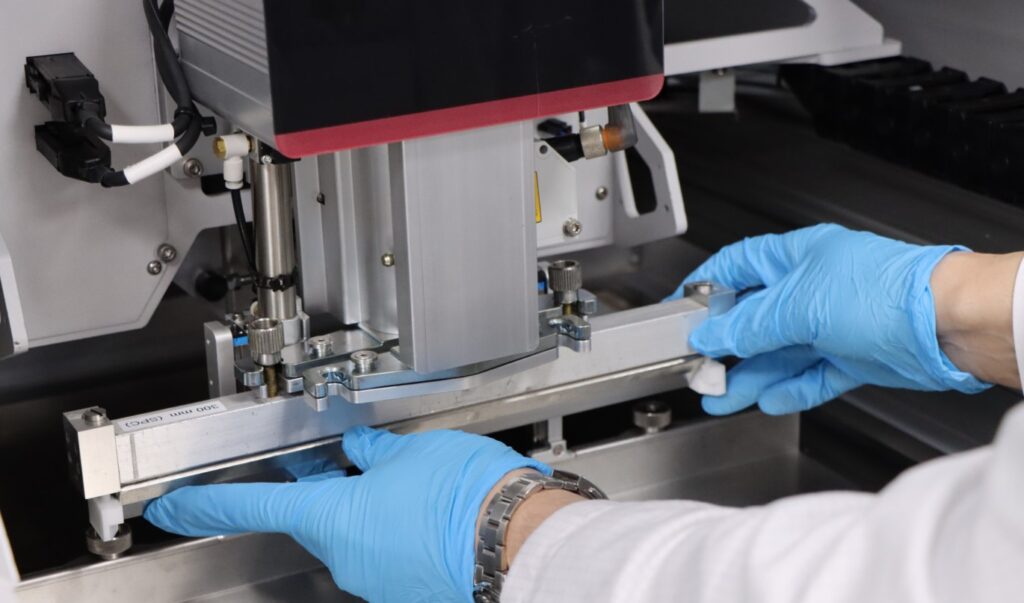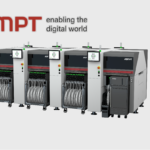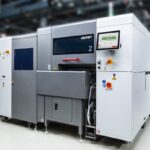ASIA ELECTRONICS INDUSTRYYOUR WINDOW TO SMART MANUFACTURING
ASMPT to Offer Latest Features for its Print Tools
ASMPT, the market and innovation leader in SMT manufacturing technology, has added two new features to its proven DEK printing platforms. Specifically, automating solder paste transfers and simplifying squeegee changes.
ASMPT covers almost the entire SMT manufacturing process with its extensive product portfolio. Moreover, it is continuously working to further automate and simplify the various workflows. “Solder paste printing, which is already the most error-prone process in SMT production, still has many steps that must be done by hand,” explains Rick Goldsmith, Director Product Management at ASMPT. “Finding suitable people for these activities is becoming increasingly difficult. (For that reason), our customers are asking for solutions that reduce personnel and material costs as well as error rates.”

Paste transfer
When the printer setup needs changed, the solder paste that remains on the old stencil needs to be transferred to the new one. Goldsmith said manual systems is necessary using a spatula. Moreover, Goldsmith said, “In most cases, some of the paste remained on the old stencil and was not fully transferred to the new one. In addition, there was always the risk that the paste would get contaminated or wind up in the wrong place, leading to short circuits and malfunctions.”
The new paste transfer unit for the DEK TQ simplifies this process. Specifically, the paste gets transferred automatically during each stencil change. However, provided the process parameters permit this. To do this, the squeegee pushes the paste to a transfer unit, from which it gets applied to the new stencil. Next, the system uses the understencil cleaning system to clean off any paste residue.

“This fully automatic paste transfer relieves the already scarce operators,” says Goldsmith. “It works faster, more precisely and more efficiently than would be possible by hand. With the manual process, up to 10 percent of the paste remains on the stencil. Our automated paste transfer system reduces this to 5 percent. This will represent a significant cost saving in solder paste, reducing manufacturing cost per PCB.” The new paste transfer system can be easily installed on all DEK TQ-series solder paste printers.
Quick Change Squeegee
Furthermore, ASMPT has also improved the squeegee changeover process on its solder paste printers. “Previously, the squeegee was affixed with two thumbscrews,” explains Goldsmith. “To change the squeegee, the operator had to loosen and then tighten them again – a time-consuming process that often caused problems, for example, when someone tightened the thumbscrews too firmly and another operator was unable to loosen them.
The time factor was also significant, because 20 changeovers over a 24-hour period are not uncommon.
A new holder makes these changeovers much easier because the squeegee unlocks automatically when removed out of the machine. It can then be switched out in a single step before the bracket locks automatically as the squeegee is retracted. Thus, this reduces the changeover time by up to 50 percent. In addition, a mechanical coding system prevents the incorrect insertion of squeegees. Quick Change Squeegee can be retrofitted in a few hours and is available for both the DEK TQ and the NeoHorizon platforms.
“Competition is getting tougher all the time in SMT manufacturing,” says Goldsmith. “To be successful in this field, you must continuously automate and streamline your operations. At ASMPT, we understand the challenges SMT manufacturers face and are able to offer our customers interesting solutions that provide them with tangible competitive advantages.”
24 July 2024




